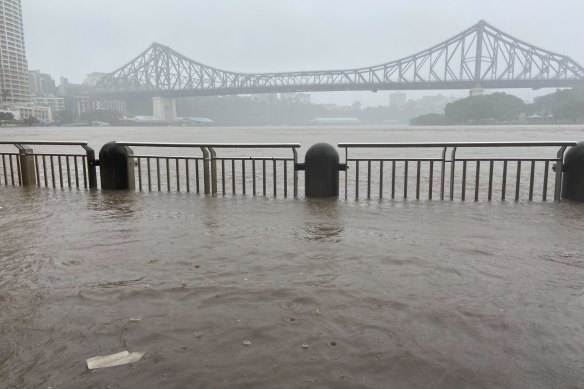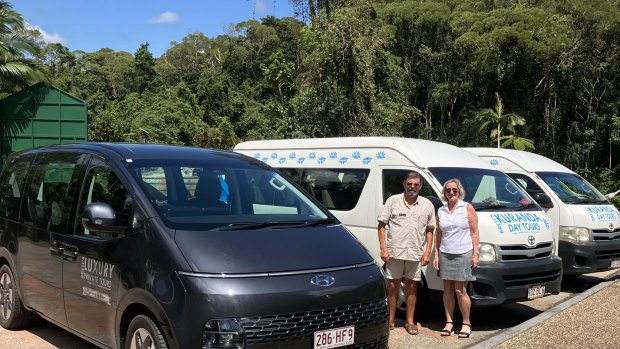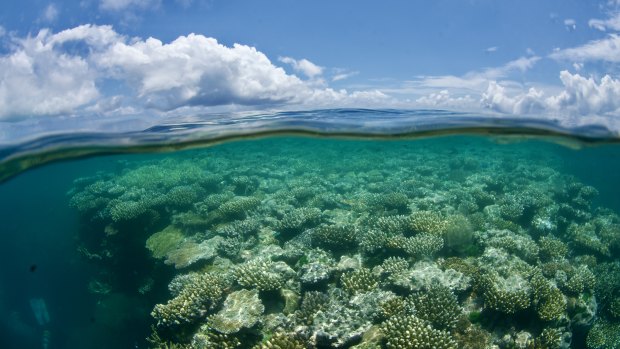- Perspective
- National
- Queensland
- Tourism
This was published 10 months ago
Storm crowds: The worst disaster is when travellers stay away
Just under two years ago, record-breaking floods inundated south-east Queensland and parts of coastal NSW, destroying homes and towns, and displacing thousands of people.
The 2022 eastern floods were the costliest extreme weather event in the nation’s history and one of Australia’s worst natural disasters.

The Brisbane River banks breaking during the 2022 eastern Australia floods. Credit: Fairfax Media
More than 20,000 homes in south-east Queensland were damaged. Across the border, many individuals were forced to rely on tourism accommodation in towns such as Byron Bay for emergency relief.
That was until Easter came into view. Flood victims in short-term stays and caravan parks were told to vacate to make way for holiday bookings.
The dismay caused further tension between the community and homestay providers such as Airbnb, something Brisbane residents will relate to. The validity of short-term accommodation that could otherwise make housing available to local residents has been a point of contention amid the city’s worsening housing crisis.
Within all of this, there’s another question to be asked of regions heavily reliant on tourism.
When is the right time to travel to a disaster-affected area?
It’s worth posing again in the wake of tropical cyclone Jasper, and the storms that ravaged the Gold Coast, Logan and Scenic Rim regions over the Christmas period.
The state and federal governments were quick to offer emergency financial assistance. They were also quick to inject support into the tourism industry, with a $5 million recovery package offering cheap flights and accommodation for Far North Queensland, with flights from Brisbane for as little as $79 one way, and $2.5 million in vouchers to prop up tourism business on the Gold Coast.

Prime Minister Anthony Albanese and Queensland Premier Steven Miles visit Far North Queensland after announcing a $25.25 million tourism recovery program.Credit: Twitter
The message from the state government and tourism operators was clear: please come visit us.
Long-time Port Douglas resident Andrea Cameron has been running tours from Trinity Beach, a coastal suburb of Cairns, for more than 12 years with Brett’s Outback Tasting Adventures. In the weeks after Jasper, they adapted tours to meet the ever-changing weather conditions and closures of roads and businesses.
While the announcement of financial assistance and grants have been more than welcomed, Cameron says they still need people to visit.
“We definitely need the support … normally we would be running at full capacity this whole period. We’ve lost that,” she says.
“We lost $100,000 worth of business [in one week] and every day that number is increasing for the people that aren’t coming … for me personally, it’s been heartbreaking.”

Brett and Andrea Cameron, owner of Brett’s Outback Tasting Adventures.Credit: Brett's Outback Tasting Adventures
Tourism is the economic lifeblood of the tropical north, with the industry employing one in five people.
“But I’m not going to be able to give them any work this week, and that’s awful,” Cameron says.
While grants such as those from the Queensland Reconstruction Authority will hopefully stave off job losses and keep the lights on for struggling businesses, they’re not yet accessible.
For those wanting to take advantage of cheap flights to regions such as north Queensland, it’s reasonable to ask whether these places are really ready to receive tourists and if they are at risk of directing resources away from those who need them most.

Teams spent days tending to the coral of the Great Barrier Reef after Tropical Cyclone Jasper.Credit: Takuma Sato
“It really is a message that we’re pushing: we want people back in Cairns,” mayor Terry James says. “Ninety per cent of the tourism businesses are now open [in the region].”
Following the lead of local communities is a good place to start. Are they begging for support and visitors? Are they at risk of losing vital business without them?
If you’re not sure what’s available, contact local operators. If they’re anything like Cameron, they’ll be more than happy to help and give honest, practical advice.
And if you’re worried that your accommodation booking might affect someone in need of emergency housing, contact your host and ensure they’re not forcing anyone to vacate.
And while Brisbane residents might want to distance themselves from traumatic flood memories, the wider merits of this conversation are worth keeping tabs on, especially as the city continues to carve its identity as a tourist destination.
Queensland experiences more natural disasters than any other state in Australia.
It also has one of the biggest tourism industries. Perhaps that is the simplest reason to show a bit of solidarity with our northern counterparts at this time.
Get the inside word on the news, sport, food, people and places Brisbane is talking about. Sign up for our City Talk newsletter here.